Celebrate UC Davis Pride Month at the Library
LGBTQIA Resources in our Special Collections
It’s UC Davis Pride Month, and we invite you to explore our Archives and Special Collections for resources. This year’s theme for UC Davis Pride Month is Rage and Resilience:
Black & Brown trans-women have been at the forefront of leading action against the homophobia and racism that exists in our society. In the present day, the rights and humanity of trans-people are constantly being called into question by political leaders. At the same time, we are cognizant that harmful ideals of White supremacy, homophobia, and transphobia are present in the bloodstream of our institution. This Pride, we recommit ourselves to standing in solidarity with our most marginalized community members.”
— UC Davis LGBTQIA Resource Center
In that spirit, Archives and Special Collections compiled resources that reflect the long battle of the LGBTQIA+ community. We’ll start with the earliest item we have in our collections, a 1765 pamphlet that documents a transgender or intersex person’s experience.
Pamphlet: Memoire pour Anne Grandjean… (1765)
Please note: Historical documents like this pamphlet may contain outdated terminology or distressing content which may be considered inappropriate or offensive to individuals or communities. It does not reflect the views or opinions of the writer of this post or the UC Davis Library.
Memoire pour Anne Grandjean… is a new acquisition. Written in French, the pamphlet was printed in 1765 and includes marginalia (a note by the first owner).
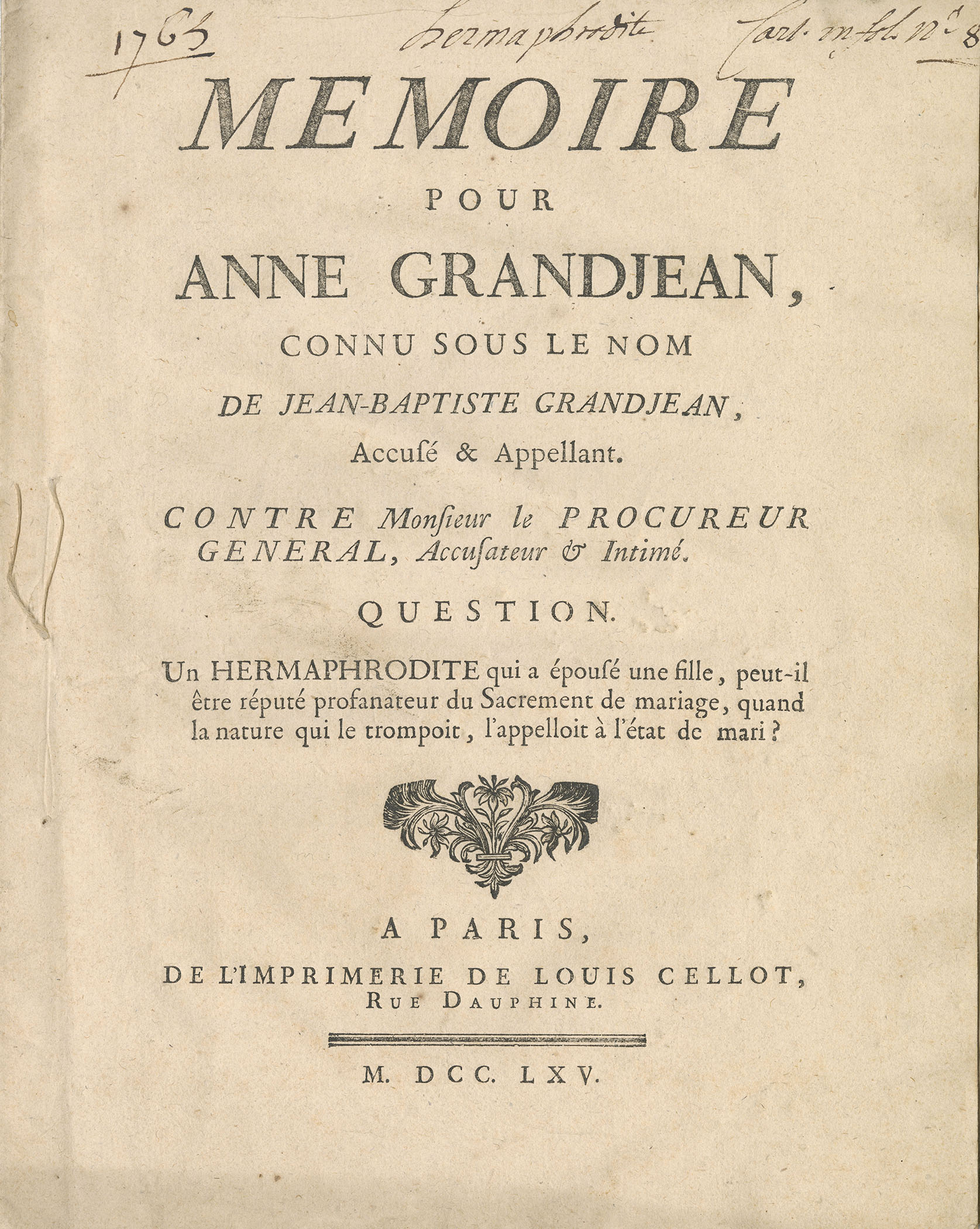
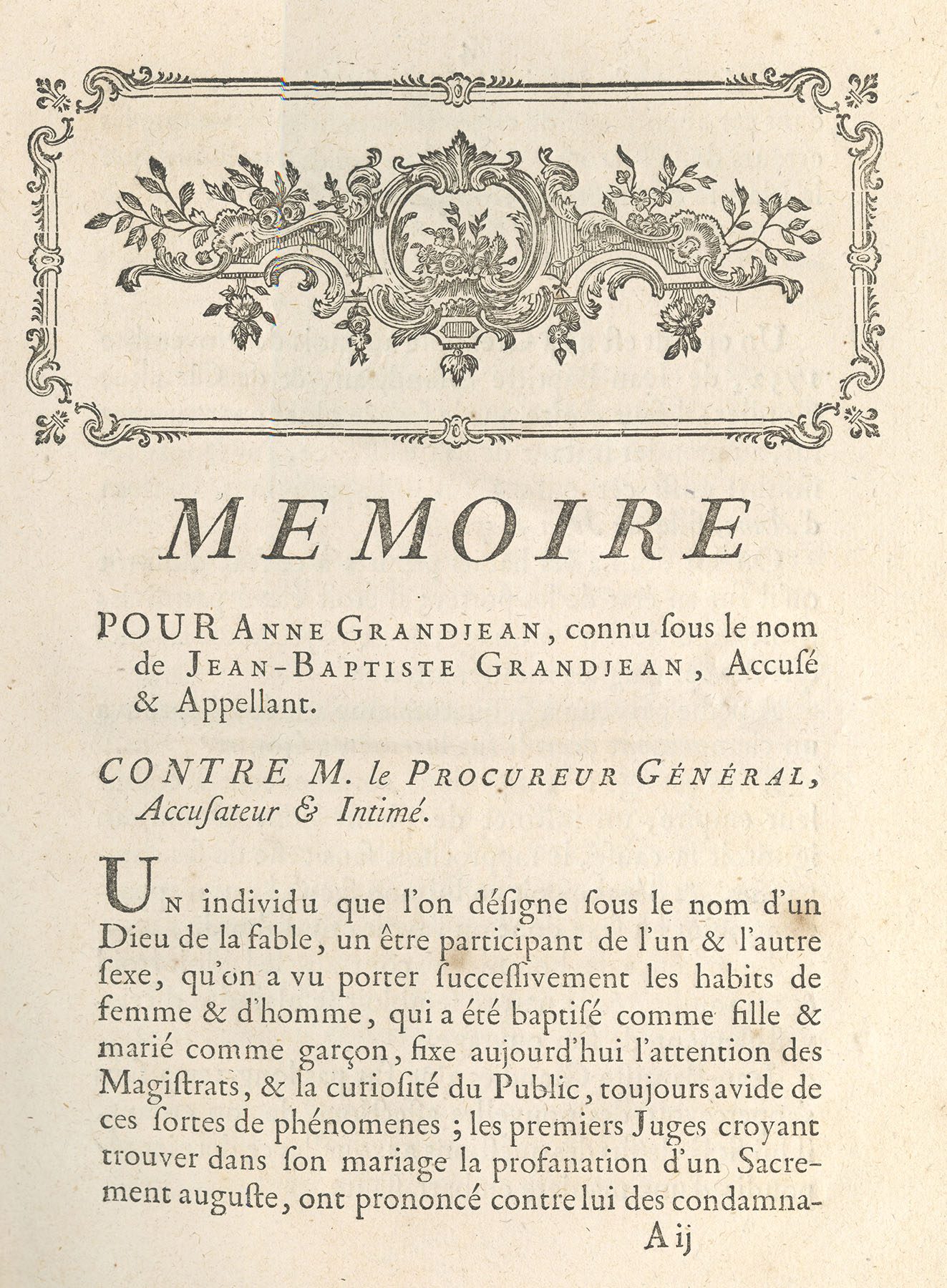
The pamphlet describes the case of Jean-Baptiste Grandjean, who the text describes as a “hermaphrodite.” Jean-Baptiste was named Anne Grandjean at birth but he changed his name to Jean-Baptiste during his teenage years. This text explores whether Grandjean should be legally tried for “profaning” the sacrament of marriage by marrying a woman. Many secondary sources use this case and the proceedings to explore sexuality and gender studies.
- Use the library’s Gender, Sexuality and Women’s Studies research guide to find resources that may explore Grandjean’s case and other similar cases.
Resources like this one highlight how people struggled for equal rights and visibility in their societies before we developed our understanding of differing sexualities and gender identities.
Poster: Sylvia Ray Rivera: Stonewall 1969 (2009)
Pride Month is celebrated nationally in June to commemorate the movement for LGBTQIA+ rights and visibility, which gained traction with the Stonewall Riots. On June 28, 1969, New York City police raided the Stonewall Inn, a gay club, and the ensuing clash was a catalyst for a greater movement where members of the LGBTQIA+ community unified to fight for their rights and their place in society.
Seventeen-year-old Sylvia Rivera was actively involved in the uprising, resisting arrest and leading a series of protests against the raid. She remained an LGBTQIA+ activist throughout her life, fighting for the inclusion of transgender people of color.
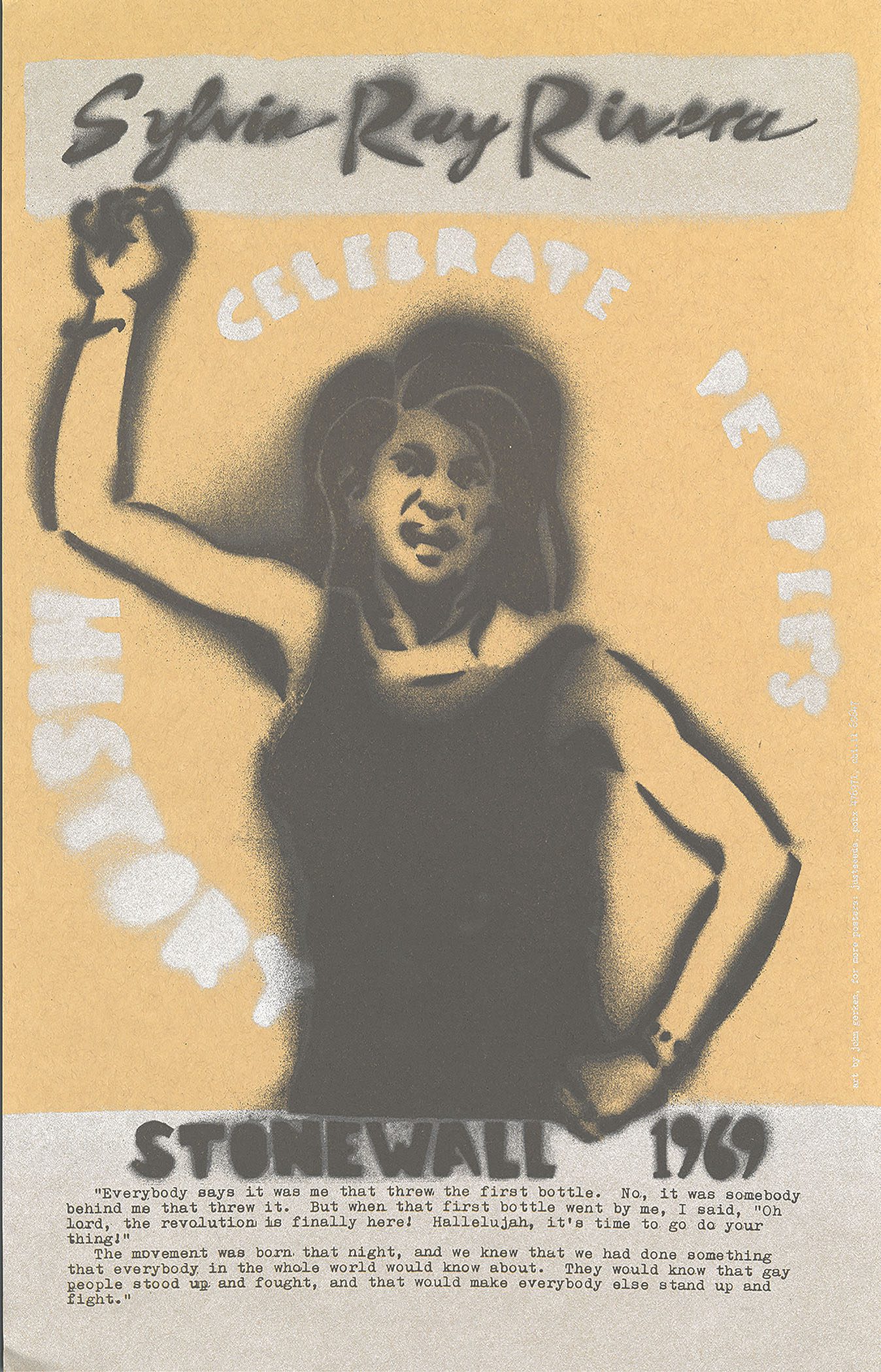
The poster above, Sylvia Ray Rivera: Stonewall 1969, is a stencil art sketch of Rivera done in 2009 by artist John Gerken, via the Justseeds Artists’ Cooperative. This poster adds contextual information by including a quote from Rivera’s experience and her outlook on the LGBTQIA movement following the Stonewall Riots.
Handbook: Out & Outraged: Non-Violent Civil Disobedience at the U.S. Supreme Court (1987)
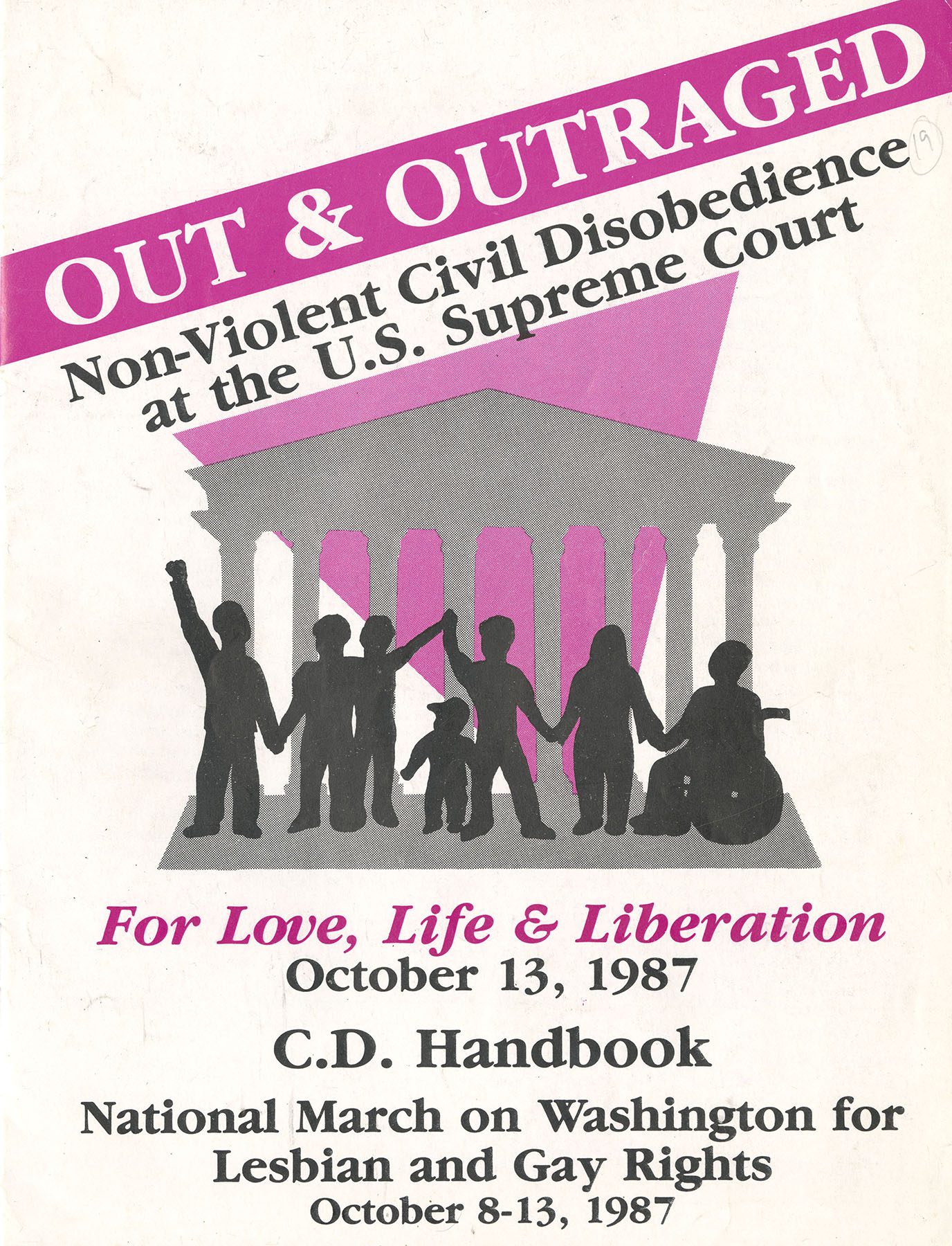
On the days of October 8-13, 1987, the largest political rally for LGBTQIA+ rights took place. Over 200,000 people participated in the National March on Washington and mass arrests and civil disobedience occurred.
The handbook, Out and Outraged, pictured above, is one of many texts that arose from this monumental moment that shows how significant it was to have an organized movement. The text informs its readers that there are risks and certain legal consequences that can occur during a march and it also emphasizes the need for non-violence. The handbook balances the information with relevant illustrations like the ones shown below.
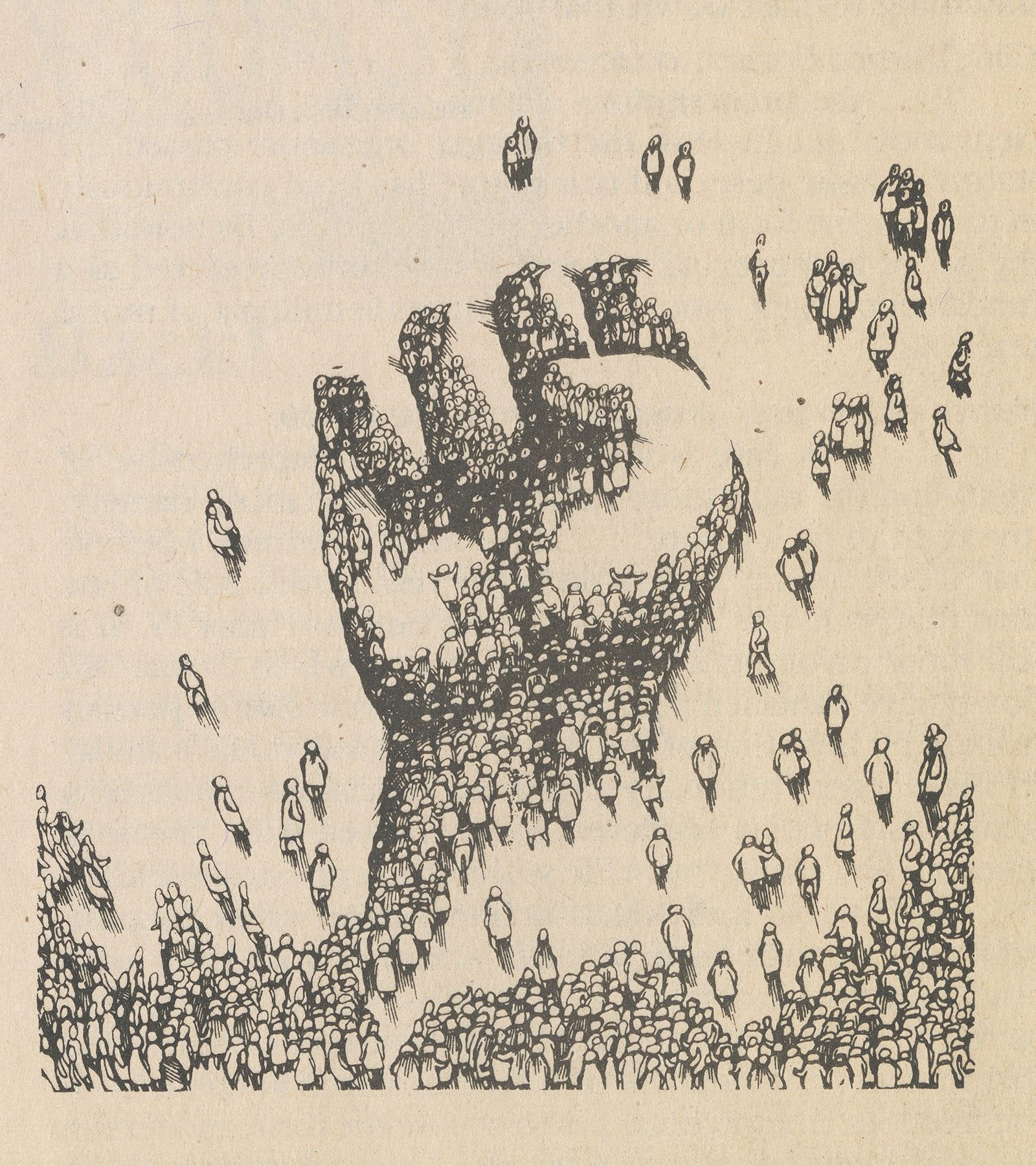
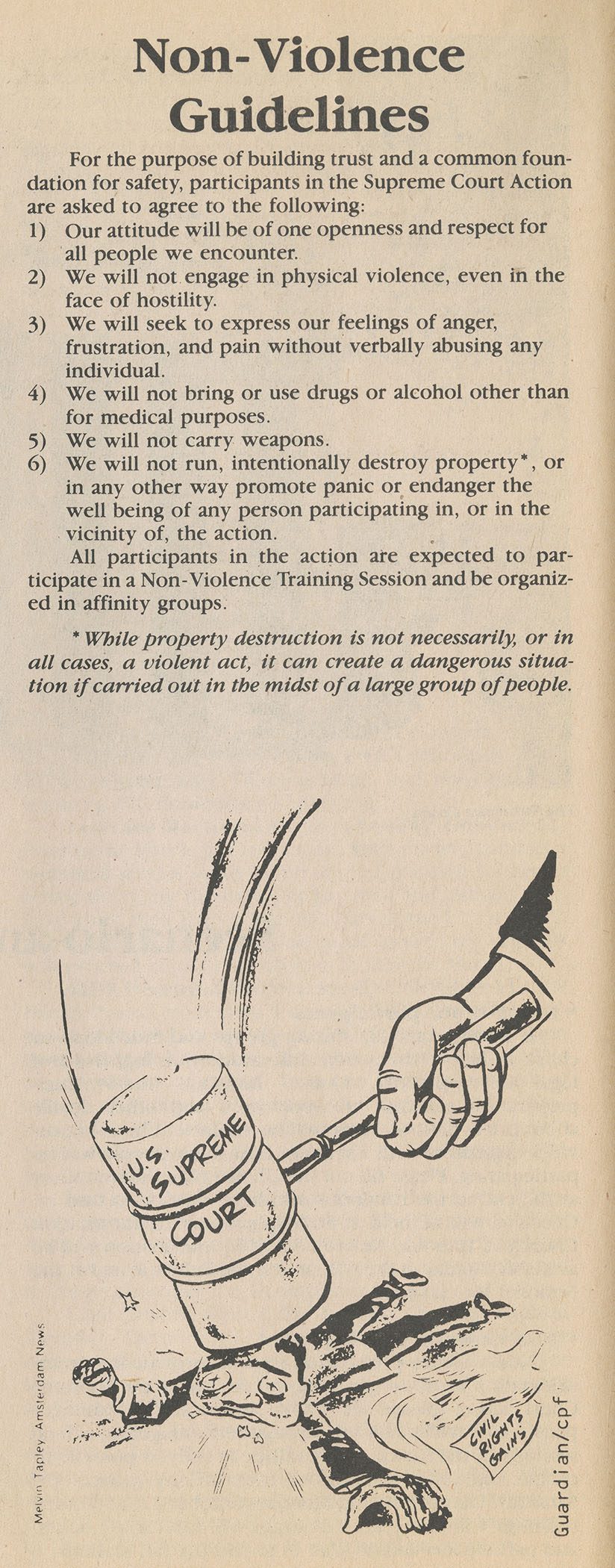
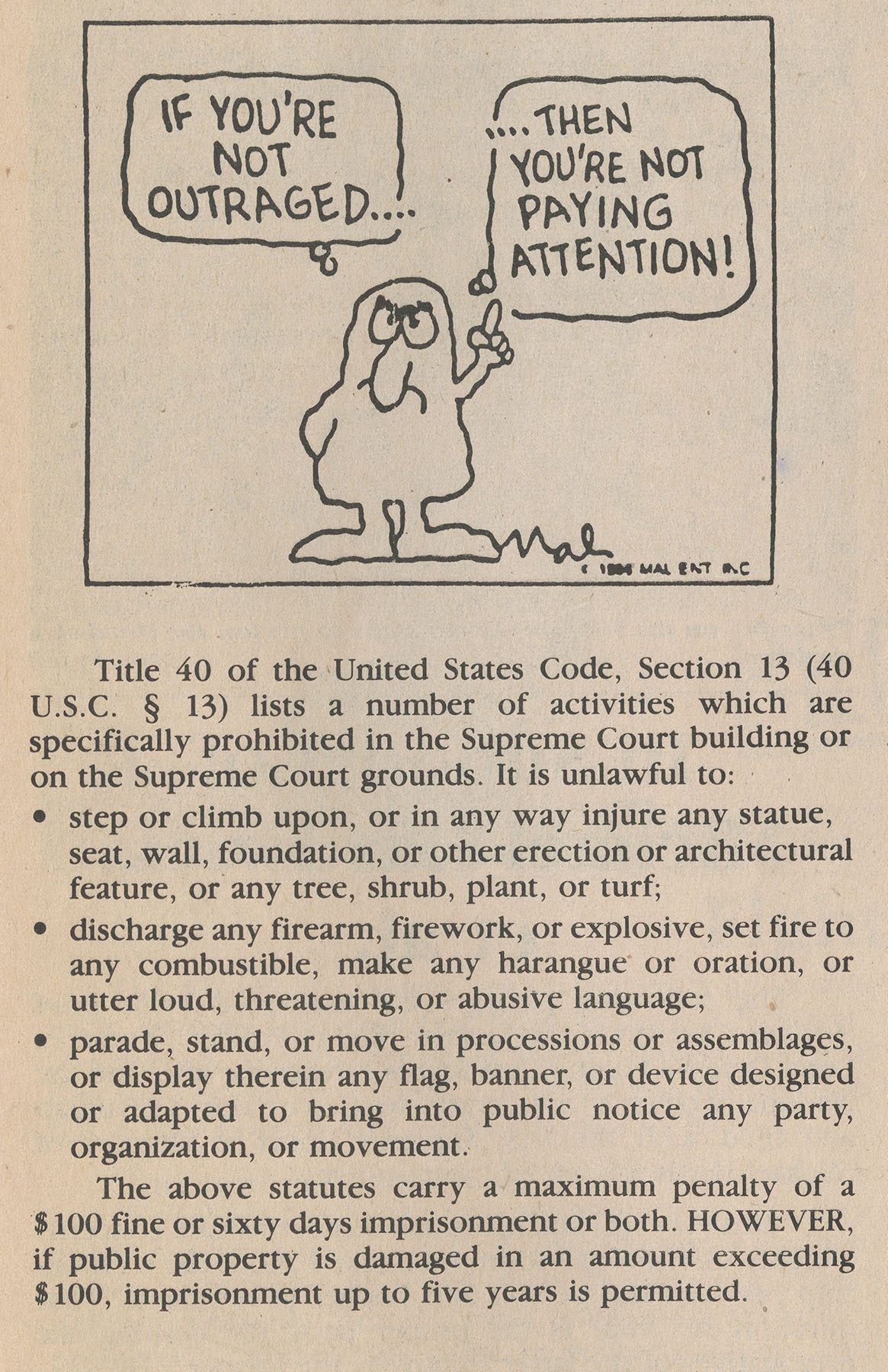
The long battle for equal rights for the LGBTQIA+ community continues today. Resources like these are a good place to reflect on changes that have already occurred and the ones that are still in progress.
Visit Archives and Special Collections to view these primary sources and over 3,000 rare books, pamphlets, and scarce serial titles in our LGBTQIA+ History and Culture Collection.
Related UC Davis Pride Month resources
- UC Davis Library x LGBTQIA Resource Center Collaboration: UC Davis Pride Month Book Recommendations
- LGBTQIA Resource Center Pride Month Programming